
The Messerschmitt Me 163 Komet is a rocket-powered interceptor aircraft primarily designed and produced by the German aircraft manufacturer Messerschmitt. It is the only operational rocket-powered fighter aircraft in history as well as the first piloted aircraft of any type to exceed 1,000 kilometres per hour (620 mph) in level flight.

Operation Bodenplatte, launched on 1 January 1945, was an attempt by the Luftwaffe to cripple Allied air forces in the Low Countries during the Second World War. The goal of Bodenplatte was to gain air superiority during the stagnant stage of the Battle of the Bulge so that the German Army and Waffen-SS forces could resume their advance. The operation was planned for 16 December 1944, but was delayed repeatedly due to bad weather until New Year's Day, the first day that happened to be suitable.

Heinrich Ehrler was a German Luftwaffe military aviator and wing commander during World War II. As a fighter ace, he is credited with 208 enemy aircraft shot down in over 400 combat missions. The majority of his victories were claimed over the Eastern Front, with nine claims over the Western Front which included eight in the Messerschmitt Me 262 jet fighter.
The Sondergerät SG 500 Jagdfaust or Jägerfaust was an experimental airborne anti-bomber recoilless rifle designed for use in the Me 163 Komet rocket plane by the German Luftwaffe during World War II.
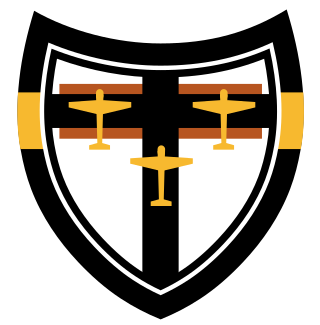
Jagdgeschwader 27 (JG 27) "Afrika" was a fighter wing of the Luftwaffe during World War II. The wing was given the name "Africa" for serving in the North African Campaign predominantly alone in the period from April 1941 to September 1942. Elements of JG 27 fought in every major theatre of operations in which the Wehrmacht operated.
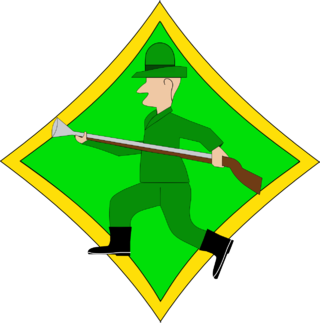
Jagdgeschwader 50 , sometimes erroneously referred to as Jagdgruppe 50, was formed at Wiesbaden-Erbenheim Airfield in the early June 1943 as Jagdgruppe Süd. It only controlled two augmented Staffeln (squadrons). It was a specialized unit with the primary objective to combat the United States Army Air Forces' heavy bomber formations as well as intercepting the Royal Air Force's de Havilland Mosquito light bombers during World War II. The Geschwader was equipped with the Messerschmitt Bf 109, some of them equipped with the under-wing WGr 21 rocket-propelled mortar, as well as a special high-altitude variant.
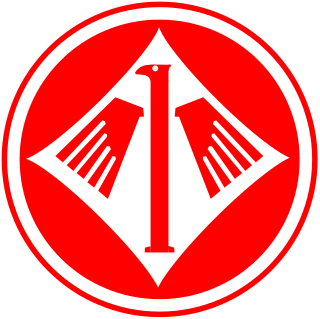
Jagdgeschwader 1 (JG 1) "Oesau" was a German World War II fighter wing created in 1939. Between 1940 and 1942, JG 1 operated primarily over the Western Front and northern occupied Europe. During the initial days of the war, JG 1 faced little resistance, apart from occasional Royal Air Force (RAF) excursions. The unit was rarely engaged in large-scale confrontations during this time.
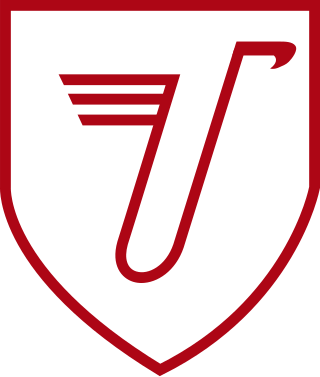
Jagdgeschwader 3 "Udet" was a Luftwaffe fighter wing of World War II. The Geschwader operated on all the German fronts in the European Theatre of World War II. It was named after Ernst Udet, an important figure in the development of the Luftwaffe, in 1942.
Jagdgeschwader 7 Nowotny was a Luftwaffe fighter wing during World War II and the first operational jet fighter unit in the world. It was created late in 1944 and served until the end of the war in May 1945.

Egon Mayer was a Luftwaffe wing commander and fighter ace of Nazi Germany during World War II. He was credited with 102 enemy aircraft shot down in over 353 combat missions. His victories were all claimed over the Western Front and included 26 four-engine bombers, 51 Supermarine Spitfires and 12 P-47 Thunderbolts. Mayer was the first fighter pilot to score 100 victories entirely on the Western Front.

Georg-Peter "Schorsch" Eder was a German Luftwaffe military aviator and fighter ace during World War II. He is credited with 78 aerial victories achieved in 572 combat missions, including 150 combat missions with the Messerschmitt Me 262 jet fighter. This figure includes 10 aerial victories on the Eastern Front, and further 68 victories over the Western Allies, including 36 four-engined bombers.

Gustav Rödel was a German fighter pilot and fighter ace who served during World War II in the Luftwaffe.

Wolfgang Späte was a German Luftwaffe fighter ace during World War II, with 99 victories claimed. He was a recipient of the Knight's Cross of the Iron Cross with Oak Leaves. For fighter pilots it was a quantifiable measure of skill and combat success. He is attributed by some, for an early, 1938 version of the speed to fly theory, usually attributed to Paul MacCready. Already a talented glider pilot before the war, he went on to become one of the Luftwaffe's foremost test pilots.
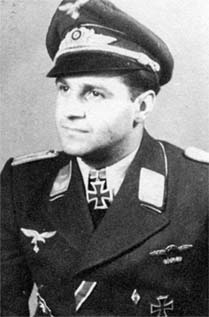
Franz Schall was a German military aviator who served in the Luftwaffe during World War II. As a fighter ace, he flew approximately 550 combat missions and claimed 137 aerial victories—that is, 137 aerial combat encounters resulting in the destruction of the enemy aircraft. He was also a recipient of the Knight's Cross of the Iron Cross, the highest award in the military and paramilitary forces of Nazi Germany during World War II.

Jagdgeschwader 6 Horst Wessel was a Luftwaffe fighter wing during World War II. Created late in the war as one of the last Jagdgeschwader, JG 6 fought on the Western and Eastern Fronts and in the Defence of the Reich over Germany. This period of the air war was characterised by few successes and heavy losses among the German fighter arm.

Jagdgeschwader 11 was a fighter wing of the German Luftwaffe during World War II. Its primary role was the defense of Northern Germany against Allied day bomber raids. Formed in April 1943 as a split from Jagdgeschwader 1, the unit primarily used the Messerschmitt Bf 109 and Focke-Wulf Fw 190.

Jagdgeschwader 300 was a Luftwaffe fighter-wing of World War II. JG 300 was formed on June 26, 1943 in Deelen as Stab/Versuchskommando Herrmann, from July 18, 1943 as Stab/JG Herrmann and finally renamed on August 20, 1943 to Stab/JG 300. Its first Geschwaderkommodore was Oberstleutnant Hajo Herrmann.
I. Jagdkorps was formed 15 September 1943 in Zeist from the XII. Fliegerkorps and the Luftwaffenbefehlshaber Mitte, and later subordinated to the Luftflotte Reich. The Stab relocated to Brunswick-Querum in March 1944 and to Treuenbrietzen in October 1944. The unit was disbanded on 26 January 1945 and its obligations were taken over by IX.(J) Fliegerkorps.

Jagdgeschwader 301 was a Luftwaffe fighter-wing of World War II. The order to form JG 301 was issued on 26 September 1943 and formed on 1 October 1943 in Neubiberg with Stab and three Gruppen (groups) as a "Wilde Sau" single-seat night fighter unit.

Jagdgeschwader 302 was a Luftwaffe fighter-wing of World War II. JG 302 was formed on 1 November 1943 in Stade, Germany with a theoretical establishment of Stab and three Gruppen (groups) known as a "Wilde Sau" single-seat night fighter unit. After re-equipping with the Focke-Wulf 190 A-8, I./JG 302 was redesignated III./JG 301 on 30 September. JG 302 made a known total of at least 348 air victory claims
















